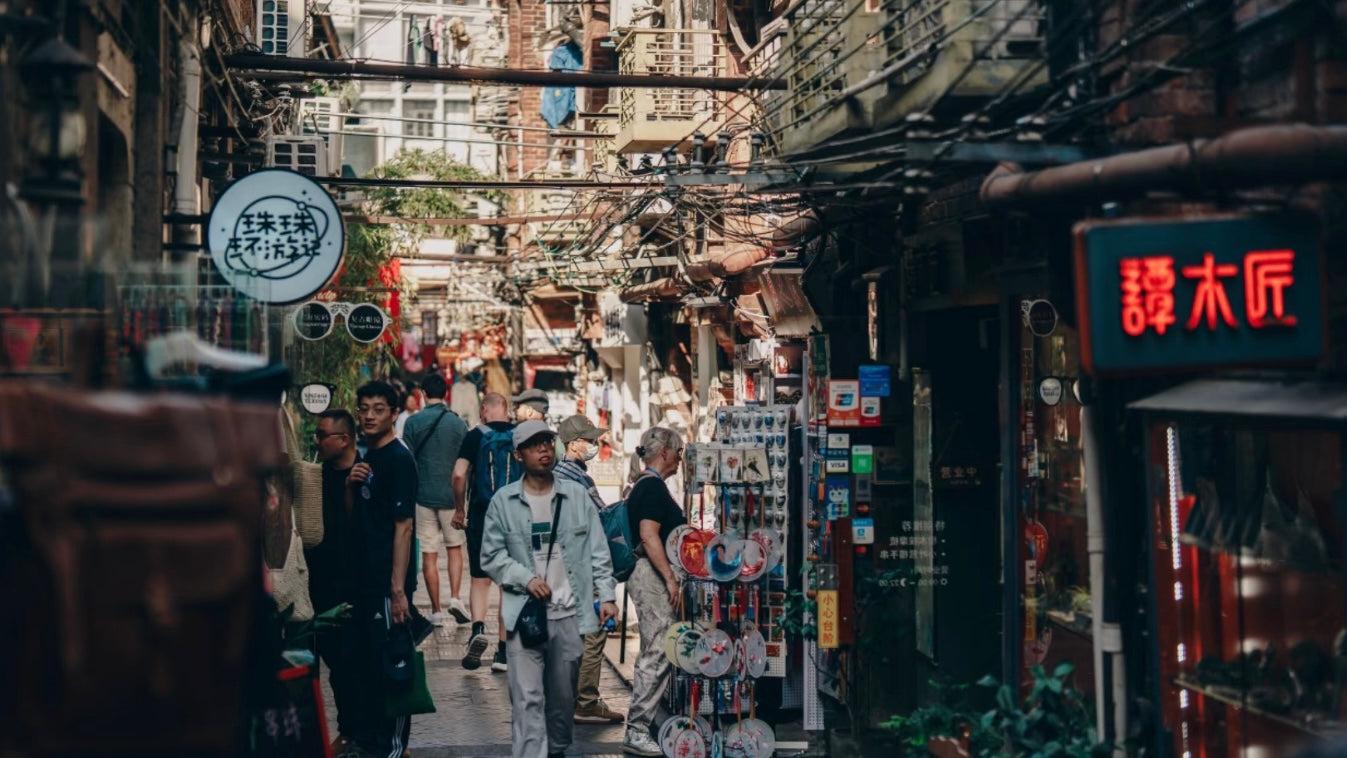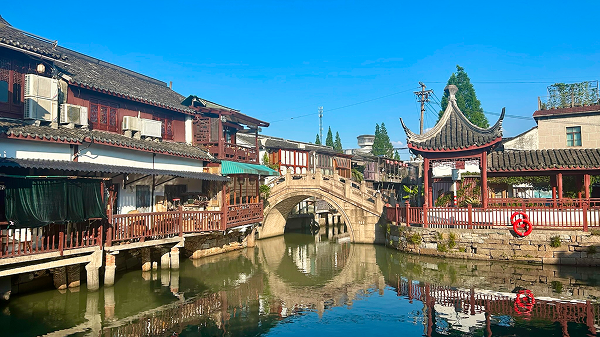In the heart of Shanghai’s bustling People’s Square, the Shanghai Museum (上海博物馆) stands as a cultural treasure trove. Shaped like an ancient bronze ding, this world-renowned museum houses over 120,000 artifacts, showcasing Chinese art and history spanning 5,000 years. From jade dragons and oracle bones to Tang Dynasty paintings and Ming porcelain, this Shanghai Museum travel guide will help you explore it like a local.
Whether you’re a curious traveler, art lover, or history enthusiast, the Shanghai Museum invites you to walk in the footsteps of emperors, scholars, and artisans. This guide will help you navigate its treasures, appreciate its themes, and explore it like a local.
1. Where Is the Shanghai Museum?
📍 People’s Square, Huangpu District
The museum is located in the heart of downtown Shanghai, surrounded by green lawns, fountains, and city life. It’s just steps away from Nanjing Road shopping district, and easily accessible by metro.
Tips from Bridge to Locals:
Arrive right when it opens to enjoy the exhibits in peace. Weekends get crowded, especially in popular galleries like bronze and ceramics.
2. The Building Itself: A Symbol of Chinese Philosophy
Designed in the shape of a round dome on a square base (天圆地方), the architecture embodies ancient Chinese cosmology:
-
Heaven is round, symbolized by the museum’s dome.
-
Earth is square, represented by the base.
The entire design subtly reflects the museum’s mission: to bridge ancient beliefs with modern understanding.

3. What to See: Must-Visit Galleries and Highlights
The Shanghai Museum is arranged into 11 permanent galleries, each focused on a specific type of artifact. You could spend days here, but these are the highlights:
🔹 1. Ancient Chinese Bronze (青铜馆)
⏳ Don’t Miss:
-
Simuwu Ding (司母戊鼎) – The world’s largest piece of ancient bronze, weighing over 800 kg, dating to the Shang Dynasty.
-
Ritual vessels, weapons, and bells used in ceremonies, warfare, and diplomacy.

Why it matters:
Bronze technology marked the rise of China’s first dynasties. These artifacts tell us about the power, religion, and structure of early Chinese society.
🔹 2. Chinese Sculpture (雕塑馆)
⏳ Don’t Miss:
-
Buddhist statues from the Northern Wei to Tang dynasties.
-
Gandhara-style Bodhisattvas, with Greco-Indian influence.

Look for:
The serene expressions and flowing robes that reflect both Indian Buddhism and native Chinese aesthetics.
🔹 3. Chinese Ceramics (陶瓷馆)
⏳ Don’t Miss:
-
Tang Sancai Horses – Glazed in yellow, green, and cream, these are icons of the Silk Road era.
-
Blue-and-white Ming porcelain, exported across the world.
-
Song Dynasty celadon, prized for its understated elegance.

Bridge with Locals Tip:
Notice how style, glaze, and motifs change across dynasties—each tells a story about trade, culture, and the emperor’s taste.
🔹 4. Chinese Painting (中国绘画馆)
⏳ Don’t Miss:
-
Landscape scrolls by Fan Kuan and Guo Xi, masters of Song Dynasty shanshui (山水, mountain-water) painting.
-
Delicate ink-wash works, where emptiness speaks as powerfully as form.

Why it matters:
Chinese painting emphasizes spirit over realism, nature as philosophy, and brushwork as self-cultivation.
🔹 5. Calligraphy Gallery (书法馆)
⏳ Don’t Miss:
-
Wang Xizhi's style, known as the “Sage of Calligraphy”, whose flowing cursive inspired centuries.
-
Imperial edicts, poems, and personal letters on silk and bamboo slips.
Bridge with Locals Tip:
Even if you can’t read Chinese, admire how the rhythm, brush pressure, and stroke movement express emotion and personality—calligraphy is considered the highest Chinese art form.
🔹 6. Minority Art Gallery (少数民族艺术馆)
⏳ Don’t Miss:
-
Traditional costumes from Tibetan, Miao, Yi, and Uygur cultures.
-
Silver jewelry, textiles, and masks used in rituals and festivals.
A vibrant contrast to the Han-dominated dynastic galleries, this section highlights China’s ethnic diversity.
4. Bonus Highlights & Exhibits
🎨 Temporary Exhibitions:
Rotating exhibits bring in treasures from around the world—Egyptian mummies, Impressionist art, or Silk Road relics. Check ahead on the official Shanghai Museum website.
🛍 Gift Shop:
Well-curated collection of art prints, replicas, ceramics, bookmarks, and more. Great for thoughtful souvenirs.
🍵 Café:
A small but quiet space near the exit. Try the jasmine tea or longjing green tea—a good break between gallery-hopping.
5. How to Experience the Museum Like a Local
✨ Don't rush – It’s tempting to hop from room to room, but pause to reflect on what each object once meant.
✨ Join a guided tour – Bridge with Locals offers private tours with bilingual guides who explain symbolism, dynastic context, and stories hidden behind each item.
✨ Sketch or journal – Many locals bring sketchbooks or notebooks and find a quiet corner to draw or write. The museum isn’t just about learning—it’s about connecting.
✨ End with a walk in People’s Park (人民公园) – Just outside the museum, you’ll find elderly couples dancing, children chasing bubbles, and calligraphy written with water on the pavement. This is modern Shanghai’s soul, in perfect contrast to what you saw inside.
Why Visit Shanghai Museum with BridgetoLocals?
✨ Get the real stories—our local hosts make the history come alive.
✨ See what matters to locals—not just what’s in the guidebook.
✨ Tailored to you—whether you love calligraphy, pottery, or Silk Road tales.
You might walk the galleries with a history student from a local university, who’s just as excited to explain a Han Dynasty sword as you are to see it. Or visit with a local family on their first trip, where the kids read the Chinese labels and translate for you.
Sometimes, the best part isn’t what’s in the glass case—it’s who you’re seeing it with。Want to explore with someone who calls this place home?








Leave a comment
This site is protected by hCaptcha and the hCaptcha Privacy Policy and Terms of Service apply.